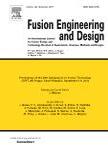版权所有:内蒙古大学图书馆 技术提供:维普资讯• 智图
内蒙古自治区呼和浩特市赛罕区大学西街235号 邮编: 010021

作者机构:Oak Ridge Natl Lab Oak Ridge TN 37830 USA Princeton Plasma Phys Lab POB 451 Princeton NJ 08543 USA Univ Michigan Ann Arbor MI 48109 USA Lawrence Berkeley Natl Lab Berkeley CA USA Gen Atom San Diego CA USA
出 版 物:《FUSION ENGINEERING AND DESIGN》 (聚变工程与设计)
年 卷 期:2020年第155卷
页 面:111529-111529页
核心收录:
学科分类:08[工学] 0827[工学-核科学与技术]
基 金:Office of Fusion Energy Sciences, US Department of Energy [DE-AC05-00OR22725, DE-AC02-05CH11231] UT-Battelle, LLC
主 题:Fusion energy Advanced algorithms Superconductors Advanced manufacturing Tritium fuel cycle Liquid metals
摘 要:In early 2017, the Fusion Energy Sciences Advisory Committee (FESAC), an advisory committee to the United States Department of Energy, was charged with identifying transformative enabling capabilities (TECs) that could promote efficient advance toward fusion energy, building on burning plasma science and technology. A subcommittee with broad expertise was formed and sought feedback from scientific experts, including experts from outside the fusion community. Three workshops were conducted, and a report was approved by FESAC in 2018 that identified four of the most promising TECs: advanced algorithms, high-critical-temperature superconductors, advanced materials and manufacturing, and novel technologies for tritium fuel cycle control. In addition, one promising TEC was identified: fast flowing liquid metal plasma-facing components. This paper will give details on the promising TECs and an overview on considerations of these TECs in the United States since the publication of the report.